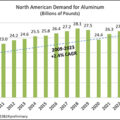Despite the decline in fish consumption in Spain, the canning and semi-canning industry closed 2024 with a slight increase of 0.7% in production, reaching 308,506 tons, according to Anfaco-Cecopesca. Its general secretary, Roberto Alonso, also highlighted a 1% increase in the value of the sector, exceeding 1,898 million euros.
Tuna remained the most produced species, representing close to 70% of the total, with growth of 2.5% in albacore tuna. In contrast, sardine and sardinilla production fell by 21.6% due to the shortage of raw material.
Spain continues to depend on imports, with a fishing trade balance in deficit and a coverage rate of 65%. However, while foreign trade in fishery products fell by 1.8%, exports of canned and prepared fish grew by 3.72%, exceeding 233,000 tons, with Europe as the main destination.
Anfaco warned of the continuing fall in fresh fish consumption, which in November 2024 fell by 3% year-on-year, while canned fish consumption rose by 3.6%, attributed to its adaptation to new consumption habits.
By 2025, the sector’s priorities include consolidating exports and combating “unfair competition”. “unfair competition” from countries from countries such as Thailand, whose canned products enter the European market without complying, according to Anfaco, with EU standards. The association has asked Brussels for greater control over these imports.














